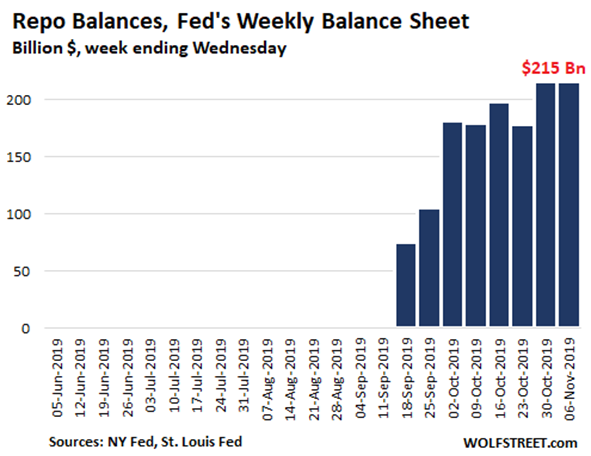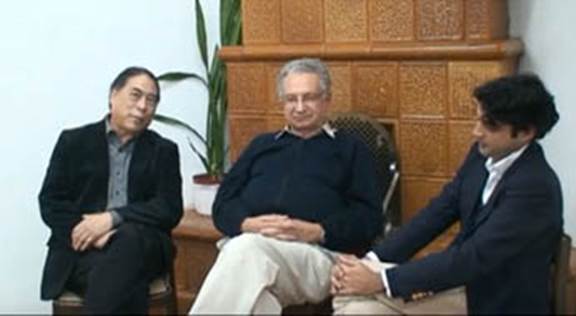Illiquidity & Gold And Silver In The End Game
Commodities / Gold & Silver 2019 Nov 11, 2019 - 12:42 PM GMTBy: Darryl_R_Schoon
 …the financial system experienced some serious liquidity shortages in August 2007, and the Fed injected funds to help keep financial markets operating effectively so that they would continue to support ongoing economic activity
…the financial system experienced some serious liquidity shortages in August 2007, and the Fed injected funds to help keep financial markets operating effectively so that they would continue to support ongoing economic activity
Federal Reserve Bank of San Francisco, August 2007
In August 2007, a credit crunch swept global markets forcing central banks to provide billions in emergency liquidity to ensure markets remained functioning. Despite the emergency infusion, financial markets and investment banks collapsed one year later in the greatest financial crisis since the 1929 stock market crash and the Great Depression of the 1930s.
The financial market turmoil in 2007 and 2008 has led to the most severe repercussions on the real economy…money market participants had become reluctant to lend to each other… Repurchase agreements, or “repos,” allow market participants to obtain collateralized funding by selling their own [and/or their clients’] securities and agreeing to repurchase them when the loan matures.
Deciphering the liquidity and credit crunch 2007-2008, Markus K. Brunnermeir, Princeton University, 2009
The repo market is, in fact, the bankers’ pawnshop, where banks—and, now, money market and hedge funds—in need of quick cash can pawn their (or their clients’) securities when they need quick overnight loans to meet cash obligations the next day.

Illustration by Martha Schoon
SEPTEMBER 2019 - THE RETURN OF THE REPO CRISIS
September's repo operations on September 17th were the first from the Fed since the 2008 financial crisis, and marked another government action meant to relieve pressure on the nation's economy.
Business Insider, September 26, 2019

The Fed has been forced to provide hundreds of billions of dollars in emergency liquidity to keep overnight repo rates from spiking since September 17th when they reached 8.5 %, i.e. the Fed’s target rate is 2 %.
…Had the New York Fed not stepped in to offer a $75 billion injection on Sept. 17 and repeated its operations daily since then, trouble in repo could’ve spread and caused tighter credit conditions elsewhere,
Gennadiy Goldberg, TD Securities senior rates strategist, Bloomberg News, October 1, 2019
Of the Fed’s serial repo interventions, George Selgin wrote, "perfect storm" is not the right metaphor, since such a storm is a freak event that's unlikely to be repeated. What happened in the repo market is, in contrast, quite likely to repeat itself, and might be repeating itself as I write this were the Fed not repeatedly offering fresh reserves to the money market. Perhaps "climate change" is more like it.
Reflections on the Repo-Market Imbroglio, October 3, 2019
On October 4th, Reuters noted: The New York Federal Reserve will continue to boost liquidity in money markets into November... The bank will offer daily repurchase agreement, or repo operations, offering at least $75 billion a day in daily cash injections through November 4,
On November 5th, the Wall Street Journal reported the New York Fed had added permanent liquidity to the repo markets by purchasing more than $42 billion in Treasuries in addition to open-ended interventions.
New York Fed Adds $102.14 billion to Markets, Buys More Treasury Bills
-----------------------------------
On September 17th, the financial system suffered a severe and inexplicable setback and was sent to urgent care. There, monetary specialists recommended a massive injection of liquidity to bring rapidly rising indicators of systemic stress back down to normal.
The specialists soon discovered the financial system was in need of even more liquidity and announced the massive daily injections of liquidity involving hundreds of billions of dollars would continue through October 4th.
On October 4th, they announced the injections would continue for one more month. On November 5th, it was announced liquidity injections would continue perhaps ad infinitum and some would become permanent.
Throughout the crisis, the Fed has issued explanations regarding possible causes for the unexpected bout of severe systemic distress. Many observers found the Fed’s explanations to be confusing, inadequate and, perhaps, intentionally obfuscatory.
Some believe the underlying conditions are, in fact, fatal, that the temporary stay in urgent care will be followed not by a return to health, but by hospice. Some even suspect the financial system is already on life-support and has artificially been kept alive since 2008 by a reinsurance company that would be bankrupted by the historic death benefit due at its demise.
With no viable alternative, the reinsurance company has clearly opted to pay for the increasingly expensive end-of-life care the financial system demands…until it can’t.
PROFESSOR ANTAL E. FEKTE, SANDEEP JAITLY AND THE ARMAGEDDON ALERT
I have had the pleasure and honor of knowing Professor Antal E. Fekete for twenty years. A monetary scientist by nature and a mathematician by training, Professor Fekete’s understanding of gold and money is perhaps more critically relevant today than at any other time in history.
It was Professor Fekete who introduced the idea of gold backwardation after having bought a seat on the Winnipeg Commodity Exchange (on a professor’s salary) in 1972 to observe how the world’s first futures market in gold would operate.
It was from this unique vantage that Professor Fekete saw the importance of the gold basis in signaling when fiat capital markets might implode—A POINT WHICH WE ARE NOW APPROACHING—should gold not be reintroduced into today’s increasingly unstable monetary system.
Sandeep Jaitly, like Professor Fekete, a mathematician, in addition to then being a London fund manager and expert in gold and silver derivatives, was introduced to the Mengerian school of Austrian economics by Professor Fekete.
In 2010, Jaitly made a seminal contribution to Professor Fekete’s study of the gold basis with his concept of the co-basis, a contribution so important Professor Fekete called it “the Armageddon Alert”.
I interviewed Professor Fekete and Sandeep Jaitly on the co-basis and Armageddon alert at Professor Fekete’s Gold Standard University in Hungary in March 2010., see https://www.youtube.com/watch?v=rFTPHqQzDg8,

The Gold Basis as a Trading Tool and Armageddon Alert with Sandeep Jaitly
On April 4 & 5, 2020, Sandeep Jaitly, I, and others will be speaking on the topic Money: Rock, Paper, Scissors to be held at the Royal School of Mines at Imperial College in London. To register, see https://purelytheoreticalresearch.com/register.php.
These are most interesting times. They are about to become even more interesting. Join us in London.
Buy gold, buy silver, have faith.
By Darryl Robert Schoon
www.drschoon.com
About Darryl Robert Schoon
In college, I majored in political science with a focus on East Asia (B.A. University of California at Davis, 1966). My in-depth study of economics did not occur until much later.
In the 1990s, I became curious about the Great Depression and in the course of my study, I realized that most of my preconceptions about money and the economy were just that - preconceptions. I, like most others, did not really understand the nature of money and the economy. Now, I have some insights and answers about these critical matters.
In October 2005, Marshall Thurber, a close friend from law school convened The Positive Deviant Network (the PDN), a group of individuals whom Marshall believed to be "out-of-the-box" thinkers and I was asked to join. The PDN became a major catalyst in my writings on economic issues.
When I discovered others in the PDN shared my concerns about the US economy, I began writing down my thoughts. In March 2007 I presented my findings to the Positive Deviant Network in the form of an in-depth 148- page analysis, " How to Survive the Crisis and Prosper In The Process. "
The reception to my presentation, though controversial, generated a significant amount of interest; and in May 2007, "How To Survive The Crisis And Prosper In The Process" was made available at www.survivethecrisis.com and I began writing articles on economic issues.
The interest in the book and my writings has been gratifying. During its first two months, www.survivethecrisis.com was accessed by over 10,000 viewers from 93 countries. Clearly, we had struck a chord and www.drschoon.com , has been created to address this interest.
Darryl R Schoon Archive |
© 2005-2022 http://www.MarketOracle.co.uk - The Market Oracle is a FREE Daily Financial Markets Analysis & Forecasting online publication.



